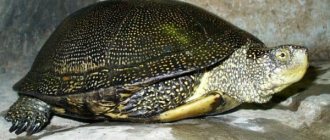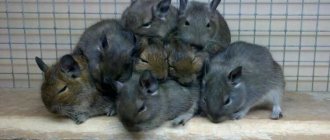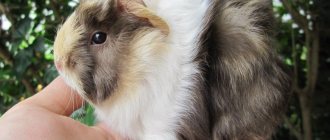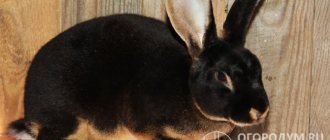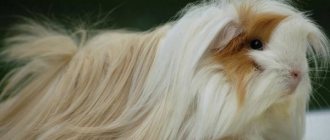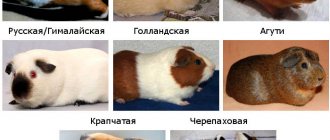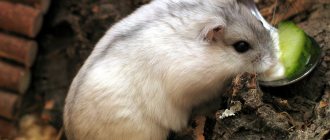Black ornathus or black phantom (Hyphessobrycon megalopterus) is a popular and unpretentious aquarium fish; many aquarists consider black ornathus to be the most interesting of the tetras in terms of behavior. They are peace-loving fish, but sometimes the males start fights among themselves, but these are more like demonstration performances and they do without serious injuries.
Habitat in nature
Hyphessobrycon from the Ancient Greek οπελάσσων, meaning "smaller in stature", is used as a prefix, plus the common name Brycon. Megalopterus from Ancient Greek μέγας, meaning "large", and πτερόν, meaning "fin", presumably in reference to the enlarged dorsal fin in male specimens.
The black phantom (Hyphessobrycon megalopterus) was first described in 1915. It is found in South America, in the upper reaches of the Rio Madeira, the main branch of the western Amazon watershed in Bolivia and western Brazil, including its main tributaries Rios Beni and Mamore, as well as the upper Rio Paraguay in Brazil.
The water of these rivers has a clean and moderate flow and abundant aquatic vegetation. They live in schools and feed on worms, small insects and their larvae.
Typically found in quiet tributaries and pools, including ponds and small lakes, where it forms aggregations around areas of vegetation or submerged tree roots. Such places are rich in aquatic plants, with at least 280 species recorded, including representatives of genera popular in the aquarium hobby, such as Echinodorus, Bacopa, Ludwigia, Eleocharis and Salvinia.
General information
Ornathus is a collective group of freshwater ray-finned fish from the Characin family. These small, gregarious species live in Central and South America. Popular aquarium inhabitants, valued for their beauty, as well as unpretentiousness in maintenance and reproduction.
The second common name for ornatus is “phantom”. This name is related to the structure of their body. It is strongly flattened laterally, translucent (sometimes you can see the internal organs). This adaptation allows fish to effectively hide from predators by masquerading as their environment.
The first ornathus came to aquarium enthusiasts in the 30s of the 20th century.
Content complexity
In general, an unpretentious and peaceful fish. One of the most popular aquarium tetras. Although the black phantom is not particularly bright, it stands out due to its behavior.
They are much less demanding on water parameters than their closest relatives - red phantoms, which differ from them in color.
Males are territorial and guard their space. When two males meet, a battle takes place in which there are no casualties. They spread their fins and try to show off their brightest colors to their opponent.
Description
The body has a typical tetra shape. When viewed from the side, it is oval, but at the same time compressed from the sides. The black phantom reaches a maximum body length of about 3.6 cm. Life expectancy in an aquarium is about 5 years.
The body color is transparent brown with a large black spot surrounded by an iridescent silver border just behind the gill cover. Males are not as brightly colored as females. The fins of the male are black, as is the dorsal fin of the female; The anal and adipose fins of the female are reddish in color. Females are more beautiful, with reddish adipose, anal and pectoral fins.
The veil-finned black phantom, apparently bred by captive breeders, is sometimes sold in the aquarium trade (the male has elongated dorsal and anal fins even in the wild form).
Notes
This species is popular in the aquarium hobby and is bred commercially in several countries. Sometimes a selection form with veil fins is found.
Red phantom (Hyphessobrycon sweglesi) closely related species
A fairly strong fish that can withstand various diseases relatively easily. Susceptible to ichthyophthyriasis and oodynia. It is believed that the parasites that cause these diseases usually enter the aquarium along with live food caught from water bodies where fish live. Invasion is promoted, in particular, by a sharp drop in temperature. Due to the dark coloration of the body and fins, damage to black phantom by ichthyophthyriasis is easily determined at an early stage. This allows you to take prompt action in a timely manner. During the treatment period for the black phantom, which lasts about 1 week, it is necessary to increase the water temperature in the aquarium by 2-3° C.
Feeding
They are omnivores, feeding on small invertebrates, crustaceans, filamentous algae, fallen fruits and the like in nature. Extremely unpretentious in feeding, black phantoms will eat all types of live, frozen or artificial food. The basis of nutrition can be high-quality flakes, and additionally you can feed with any live or frozen food, such as bloodworms or brine shrimp.
Diet of black phantoms
Black phantoms are omnivores, but they prefer protein foods. They eat bread crumbs, semolina, etc. only when they are very hungry; they take food from the bottom very reluctantly. The diet should be as varied as possible... The use of dry food is kept to a minimum. The presence of small insects in the diet has a positive effect on the condition of the fish - they spawn more often and more willingly.
It is also interesting that prolonged keeping of adult fish in fairly hard water (10-15dGH) does not have a negative effect on reproductive function, which casts doubt on the prevailing opinion among aquarists that producers of soft-water characinids become sterile when kept in hard water .
The genus Megalamphodus has about a dozen species, of which only two species are regularly imported to Russia: black (Megalamphodus megalopterus) and red (Megalamphodus swegfesi) phantoms.
Keeping in an aquarium
Black ornathus are unpretentious, but it is better to keep them in a flock of 7 or more individuals. It is in it that they can open up.
They are very active fish and the aquarium should be quite spacious, about 80 liters or more. Especially if you have a decent flock.
Ideally, they need soft water for maintenance, but they have perfectly adapted to local conditions and tolerate different parameters well.
An aquarium with black phantoms should be well planted with plants, preferably with plants floating on the surface, but there should also be places where the fish can swim freely.
Subdued light and dark ground favorably emphasize the beauty of the black phantom.
Adding dried leaves will further enhance the natural feel, as well as provide additional cover for the fish and lead to the growth of microbial colonies as the leaves decompose.
The latter are beneficial as they provide an additional source of food for both adults and juveniles, while humic substances released by decaying leaves are also considered beneficial.
Aquarium care is standard - regular water changes, up to 25%, and filtration is desirable, with a moderate flow. Water temperature 23-28 °C, pH: 6.0-7.5, 1 - 18 dGH.
Ornatus or red phantom
Order, family: characins.
Comfortable water temperature: 20 - 24 C.
Ph 5.5 – 8.
Aggression: non-aggressive 0%.
Compatibility: non-aggressive, peaceful fish (neons, tetras, swordtails, platies, ornatus, pulchers, lanterns).
Ornatus or red phantom is a small, slender, interesting aquarium fish. The body is elongated and laterally flattened. The dorsal fin is high, the caudal fin is two-lobed.
The fish are schooling fish; it is best to keep them in a spacious aquarium of at least 50 liters in a group of 10 or more.
Water parameters for maintenance: dH up to 15°; pH 6.5-7.0; t 23-26°C. Install a filter and aeration in the aquarium and change up to 25% of the water volume weekly.
Compatible with all peaceful fish. You should not plant them with large fish and predators.
Feeding aquarium fish should be correct: balanced, varied. This fundamental rule is the key to the successful keeping of any fish, be it guppies or astronotuses. The article “How and how much to feed aquarium fish” talks about this in detail; it outlines the basic principles of the diet and feeding regime of the fish.
In this article, we note the most important thing - feeding fish should not be monotonous; the diet should include both dry food and live food. In addition, you need to take into account the gastronomic preferences of a particular fish and, depending on this, include in its diet food either with the highest protein content or, conversely, with plant ingredients.
Popular and popular food for fish, of course, is dry food. For example, you can constantly and everywhere find food on aquarium counters - the leader of the Russian market; in fact, the range of food for this Tetra is included as individual food for a specific type of fish: for goldfish, for cichlids, for loricariids, guppies, labyrinths, arowanas, discus, etc. .d. Tetra has also developed specialized foods, for example, to enhance color, fortified, or for feeding fry. You can find out detailed information about all Tetra feeds on the company's official website - here.
It should be noted that when purchasing any dry food, you should pay attention to the date of its manufacture and shelf life, try not to buy food in bulk, and also store the food in a closed state - this will help to avoid the development of pathogenic flora in it. All of the above is just the fruit of observing this type of aquarium fish and collecting various information from owners and breeders
We would like to share with visitors not only information, but also live emotions that allow us to understand the world of aquariums more fully and subtly. Register at https://fanfishka.ru/forum/, participate in discussions on the forum, create profile topics where you will talk about your pets in the first person and from the horse’s mouth, describe their habits, behavior and content, and share with us your successes and joys, share your experiences and learn from the experiences of others. We are interested in every bit of your experience, every second of your joy, every awareness of a mistake, which makes it possible for your comrades to avoid the same mistake. The more of us, the more pure and transparent drops of goodness in the life and everyday life of our seven billion society
All of the above is just the fruit of observing this type of aquarium fish and collecting various information from owners and breeders. We would like to share with visitors not only information, but also live emotions that allow us to understand the world of aquariums more fully and subtly. Register at https://fanfishka.ru/forum/, participate in discussions on the forum, create profile topics where you will talk about your pets in the first person and from the horse’s mouth, describe their habits, behavior and content, and share with us your successes and joys, share your experiences and learn from the experiences of others. We are interested in every bit of your experience, every second of your joy, every awareness of a mistake, which makes it possible for your comrades to avoid the same mistake. The more of us there are, the more pure and transparent drops of goodness there are in the life and everyday life of our seven billion society.
Compatibility
The Black Phantom is a very peaceful fish and is well suited for community aquariums. As already mentioned, you need to keep them in a flock of 7 or more individuals, then the ornathuses open up and are noticeable. Unlike other tetras that prefer to live in large schools, they also do well if kept in a group of four or five, making them suitable for small aquariums.
If there are many males in the pack, they will behave as if they are fighting, but they will not hurt each other. Try to buy a mixed flock of at least 8-10 individuals, as this species forms dominance battles in which males compete for the attention of females, and therefore displays more interesting behavior and better coloration.
This behavior is usually a clarification of the hierarchy in the pack. It is better to keep them with small and peaceful fish, for example, cardinals, lalius, marble gouramis, black neons.
Sex differences
Males have longer fins than females, and when they are ready to spawn, the females become plumper. But the biggest difference is their color. The adipose fin, located on the upper part of the body behind the large dorsal fin, is much more visible in females than in males because it is red in females and gray in males. The dorsal fin of the female has a more intense black color than that of the male. When the fish is in the breeding state, the coloring of both sexes becomes more distinct, and the male displays his black fins more clearly.
Appearance
All ornathus have a similar body shape. It is tall, strongly flattened on the sides, tapering in the tail area. Dimensions range from 4 to 7 cm. The body is translucent, often you can even see the insides of the fish.
The caudal fin is two-lobed and relatively high. The anal extends from the middle of the body to the tail. The dorsal fin is high, especially in males. There is a rounded adipose fin characteristic of all characins.
The color is varied, depending on the species: red, pink, almost black, silver. Many species are characterized by dark spots behind the gill covers. A faint black stripe passes through the eye.
Breeding
The spawning area should have a lot of floating plants and twilight. It is better to avoid using soil, as this makes it easier to care for the fry.
Fish selected for breeding are fed generously with live food for a couple of weeks. But with the beginning of spawning, you can not feed the fish or give them a minimum of food.
The stimulus for the start of spawning is a decrease in pH to 5.5 and soft water around 4 dGH. The easiest way to obtain such parameters is using peat.
The male begins a complex courtship ritual, which results in the female laying up to 300 eggs. Since the parents can eat the eggs, it is better to put a net or small-leaved plants on the bottom.
After spawning, the pair must be removed. After a couple of days, the eggs will hatch into a fry, which needs to be fed with very small food, for example, ciliates, until it begins to take artemia nauplii.
